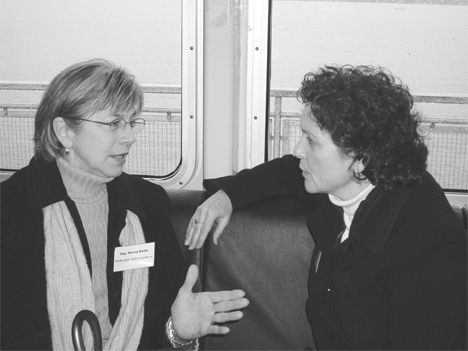Gov. Chris Gregoire approved the construction of three new
100-car ferries Thursday to replace the Steel Electrics that were pulled off the Keystone-Port Townsend run days before the Thanksgiving holiday.
The state expected to get bids on the new ferries Friday.
The measure was supported by 10th District Rep. Norma Smith, R-Clinton, and 10th District
Rep. Barbara Bailey, R-Oak Harbor.
“I’m pleased with the quick action on this legislation to start the process of replacing the boats on our Port Townsend to Keystone route,” Smith said. “The route is an important link for citizens, businesses, tourism and our naval bases around the region.”
More discussion about boat capacity and safety is required, Smith said.
“Our top concern, as we find a short-term solution, is to exhaust all our options and spend our money wisely to make sure we make the right choices for our communities for the long-term,” she said.
“This is an important first step towards fixing our neglected ferry system,” said Sen. Mary Margaret Haugen, D-Camano Island.
“I’m looking forward to getting appropriate vessels onto the Keystone–Port Townsend run, as well as holding Washington State Ferries accountable for their operations and maintenance plans,” she said.
Last week, lawmakers and guests took a ride on the Steilacoom II as it bobbed like a cork in calm seas. It left some to wonder, is bigger better?
The design of the Steilacoom II had been viewed as a potential replacement for the route’s ferries, due in large part because it can be built quickly and placed into service. The Coast Guard has said the Steilacoom II is safe for the problem-plagued Keystone run, a route beset by ebb currents and low tides.
Haugen, along with Island County Commissioner Phil Bakke, rode the ferry during one of its final test runs on Saturday, Feb. 9.
Bakke saw issues that could arise if a similar ferry is used on the Keystone-Port Townsend route.
“The Pierce County boat is recognized to be more maneuverable than the Steel Electrics by a long shot,” he said. “But it also has a shallower draft. So it is harder to navigate.”
The vessel may make some passengers seasick, Bakke said.
“The boat was pretty much bobbing around enough to where
I was walking around. I am susceptible to seasickness. It’s probably not going to be a comfortable boat ride,” he said.
The Steilacoom II’s captain also said cancellations might happen more frequently, Bakke said.
“That’s a concern he expressed, to expect as many if not more cancellations,” he said. “And the reason for more is because it is not as tolerant a boat for bad weather conditions. He didn’t say that the boat wasn’t safe or that there were waters that would make the boat unsafe.”
Water might rush onto the car deck and damage vehicles, Bakke added.
Haugen liked what she saw in the Steilacoom II but said larger boats would be better.
“The Steilacoom II design is one we can definitely use on our ferry system, and the one that can be built soonest,” Haugen said.
“But I’ll be pushing for the design and construction of some larger vessels that can handle all of the demands of this route, including a wider variety of weather and tidal conditions,” she said.
Until the Steilacoom II went into service on the route earlier this month, car service had been canceled between Keystone and Port Townsend since before the Thanksgiving weekend. The Steel Electrics were pulled from service after examinations discovered extensive pitting on the vessels’ hulls.
Bakke agreed the state should continue to explore other options.
“The Steilacoom II should be a back up boat,” he said.



